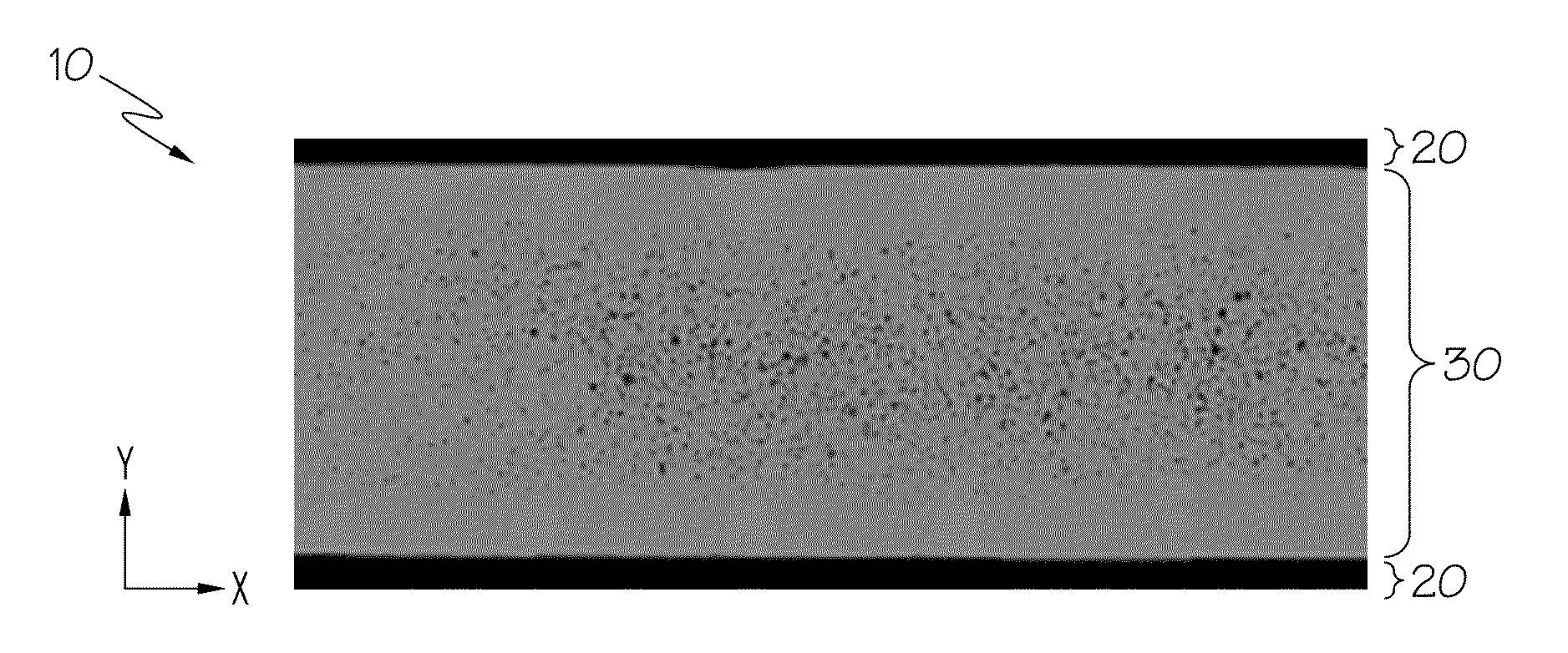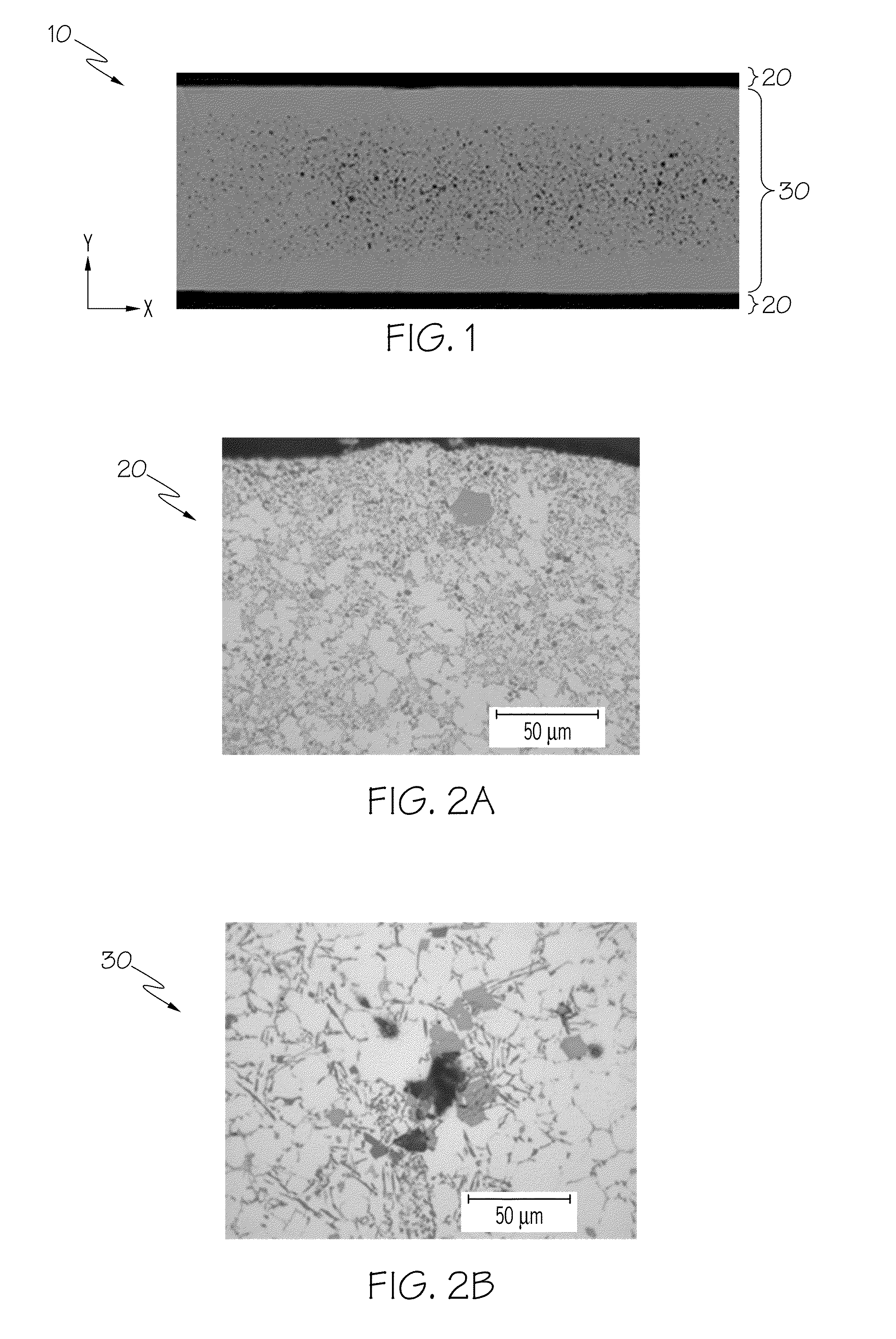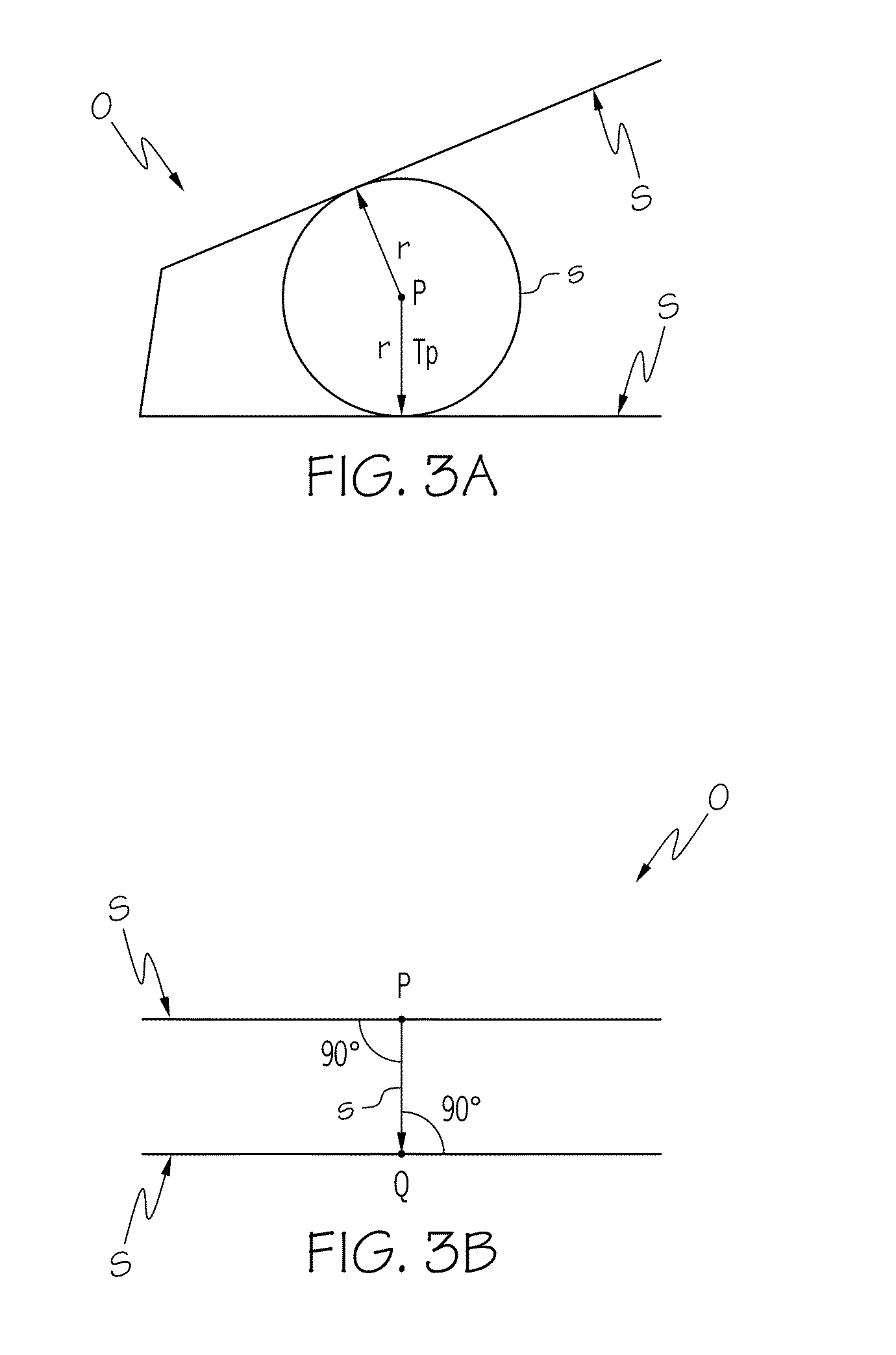Method to incorporate skin and core material properties in performance analysis of high pressure die casting aluminum components
a technology of performance analysis and high pressure die casting, applied in the direction of material analysis using wave/particle radiation, mechanical measurement arrangement, instruments, etc., can solve the problems of difficult to characterize the properties of the skin separately from those of the core, and negatively affect the ability of the component designer to optimize the design, so as to reduce the number of triangles analyzed
- Summary
- Abstract
- Description
- Claims
- Application Information
AI Technical Summary
Benefits of technology
Problems solved by technology
Method used
Image
Examples
Embodiment Construction
[0019]Referring first to FIGS. 1, 2A and 2B, a notional object to be analyzed by the method of the present invention is in the form of an HPDC cast component 10 that shows an exterior skin region 20 and an interior core region 30. In the example shown, the total thickness along the vertical (i.e., y) axis is about 19 millimeters, while the top and bottom skin regions 20 each account for about 2.67 millimeters of the overall thickness that corresponds to the wall thickness TW for the location of interest within the component 10. As can be seen, there is significantly more porosity in the core region 30 than in the skin regions 20 where the higher porosity of the core region 30 results in generally lower mechanical properties than in the lower porosity skin region 20. Referring with particularity to FIGS. 2A and 2B, micrographs of an HPDC A380 aluminum alloy are shown, where porosity and related voids are much more pronounced in the core region of FIG. 2B than in the skin region of FI...
PUM
| Property | Measurement | Unit |
|---|---|---|
| size | aaaaa | aaaaa |
| thickness | aaaaa | aaaaa |
| thickness | aaaaa | aaaaa |
Abstract
Description
Claims
Application Information
 Login to View More
Login to View More - R&D
- Intellectual Property
- Life Sciences
- Materials
- Tech Scout
- Unparalleled Data Quality
- Higher Quality Content
- 60% Fewer Hallucinations
Browse by: Latest US Patents, China's latest patents, Technical Efficacy Thesaurus, Application Domain, Technology Topic, Popular Technical Reports.
© 2025 PatSnap. All rights reserved.Legal|Privacy policy|Modern Slavery Act Transparency Statement|Sitemap|About US| Contact US: help@patsnap.com



